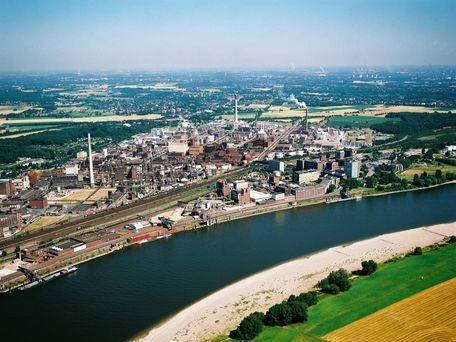LANXESS increases capacities for iron oxide pigments
LANXESS is expanding the capacity of its global production network to safeguard customer supply in the long term. In Krefeld-Uerdingen, site of the world’s largest synthetic iron oxide pigment plant, production capacities for red and black pigments will be gradually increased by around 23,000 metric tons, from the current 280,000 metric tons, by 2019. Furthermore, by means of modernization, LANXESS is also expanding capacities for yellow pigments by another 2,000 metric tons per year at its site in Porto Feliz, Brazil. LANXESS already expanded its global production network recently by starting up operation of its site in Ningbo, China. The synthesis production facility there, which commenced operation in the first quarter of 2016, is designed for an annual capacity of 25,000 metric tons of red pigment. By taking these measures, LANXESS will be increasing its global production capacities from 375,000 to 400,000 metric tons of iron oxide pigments by 2019.

In Krefeld-Uerdingen, site of the world’s largest synthetic iron oxide pigment plant, LANXESS will be gradually increasing production capacities for red and black pigments by around 23,000 tons from the current 280,000 tons by 2019.
Currenta
Well positioned to meet rising demand
“The purpose of these investments is to support the growth of our customers,” says Jörg Hellwig, head of the Inorganic Pigments business unit (IPG). As the world market leader in iron oxide pigments and a leading supplier of chrome oxide pigments, LANXESS continuously evaluates the development of the global pigment market. The company expects global demand for iron oxide pigments to grow by an average of three percent per year beyond 2018. Demand for iron oxide pigments will rise significantly due to strong growth in countries like India and the continued recovery of the building industry in North America and parts of Europe. China will also contribute to this development with growth rates remaining at a high level.
Paints and coatings are the second-largest field of application for synthetic iron oxide pigments, making up one quarter of total global consumption – and the trend is on the rise. “By 2025, we expect global annual growth in the demand for iron oxide to reach an average of 4 percent. We believe in particular that the demand for high-quality pigments with uniform global standards will increase,” adds Hellwig.
Continued consolidation of the Chinese pigment industry
Although China is by far the largest producer of synthetic iron oxides, with over 50 percent of total global supply, the number of production locations for synthetic iron oxide pigments has been decreasing steadily for several years. This is a result of the consistent implementation of environmental regulations by both pigment manufacturers and the pigment processing industry. The number of production locations has dropped by half since 2008, resulting in a reduction in supply, particularly in the segment for red pigments. According to LANXESS, this consolidation process is likely to continue.
Other news from the department business & finance

Get the chemical industry in your inbox
By submitting this form you agree that LUMITOS AG will send you the newsletter(s) selected above by email. Your data will not be passed on to third parties. Your data will be stored and processed in accordance with our data protection regulations. LUMITOS may contact you by email for the purpose of advertising or market and opinion surveys. You can revoke your consent at any time without giving reasons to LUMITOS AG, Ernst-Augustin-Str. 2, 12489 Berlin, Germany or by e-mail at revoke@lumitos.com with effect for the future. In addition, each email contains a link to unsubscribe from the corresponding newsletter.
























































